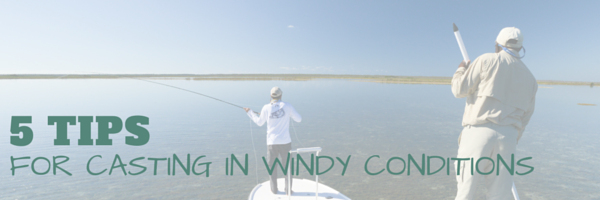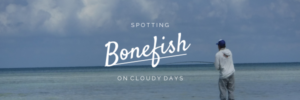Casting for bonefish in windy condition is tough. In fact, it is one of the biggest and most common challenges among bonefishermen. Fortunately, there are a few flyfishing techniques that can make these efforts far less frustrating. Following are five tips that will help you cast quickly and accurately in any circumstances.
1. Practice Ahead Of Your Trip
In order to ensure success on your bonefishing trip, spend some time casting in windy conditions before you head out. This will help you minimize false casts and develop a better understanding of how to control your power and movements when dealing with headwinds, tailwinds and crosswinds. Try throwing lots of tight loops with high line speed while casting at different angles in relationship to the wind. This way, you’ll be prepared whether the wind blows from behind, in front of or to the side of you. This will also give you a chance to break in any new wading boots that you’ve bought for your bonefishing trip.
2. Increase Your Rod Weight
Although bonefishermen usually want to pack an 8 weight only, it doesn’t hurt to have a 9 weight on hand as well. Your goal isn’t to make a delicate presentation in windy conditions. You simply want to get your fly where it needs to be. You can also fish a heavier fly. Large, light flies might work well on shallow and relatively calm flats, but once the wind starts howling, these will sink too slowly due to wave disturbances. The larger splashes that lead eye flies make in windy conditions will be masked by the water disturbances that the wind has created.
3. Increase Your Line Weight
It may be helpful to overline the rod. For instance, with an 8 weight rod, you can use a 9 weight line. This will load the road with a bit of extra weight and make it more effective in challenging conditions. Get a good feel for how long the heavy forward section of your fly line is so that you know how much line you’ll be able to carry in the air while still controlling it. When practicing in windy conditions at home, make sure to play around with different rod and line weights in order to determine which combinations work best for you and in what conditions.
4. Make Fewer False Casts
Bonefisherman aren’t able to take many of the same liberties that anglers do and this is especially true when it comes to false casts. You’ll rarely have more than a few seconds to get your line in the water after spotting a bonefish and thus, false casting can result in a number of missed opportunities and lots of frustration. Moreover, the longer that you keep your line in the air, the more likely you are to make a mistake. Load your rod with water tension (water haul), rather than trying to load it by false casting. You can do this by casting out and letting the line settle straight on the water’s surface. You can then smoothly pick your line up off the water’s surface with a back cast. This is also where overlining your road will come in handy.
5. Alter Your Casting Plane
Don’t get comfortable using just one casting plane. A lot of freshwater fishermen get stuck in an overhead plane or in an overhead plane with a slight tilt. Although you might not encounter physical obstructions that force you to cast outside of your comfort zone, the wind itself can become an obstruction. It is important to be aware of the wind when calculating your motions and taking action. As with choosing the right rod and line weights, limiting your false casts and learning to load your rod with water tension, however, choosing the right casting plane is a strategy that will become both instinctual and easier with practice and time.
Wind is the great equalizer, so get out there and practice!! Tight Lines!!









